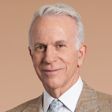Ersatz Stock Funds
A stock fund with no stocks? That was the key to success in 2008. But was the manager acting in the best interest of shareholders?


The stock market's decline has been not only devastating but also eerily consistent.
Check the performance over the 12 months ended March 27 of the 14 general categories of mutual funds that invest in U.S. stocks, and you'll find that the worst fund category lost 37% (large-company value) and the best lost 33% (large-company growth).
There was no place for investors to hide. International-stock funds also fell across the board -- by about eight percentage points more than their U.S. counterparts, on average. Of the eight broad sector-fund categories that Lipper follows, six lost at least 32%, one fell 29% (science and technology) and the best fell 18% (health and biotech).
From just $107.88 $24.99 for Kiplinger Personal Finance
Be a smarter, better informed investor.

Sign up for Kiplinger’s Free Newsletters
Profit and prosper with the best of expert advice on investing, taxes, retirement, personal finance and more - straight to your e-mail.
Profit and prosper with the best of expert advice - straight to your e-mail.
In fact, the only way to mitigate the stock-market debacle was to stay away from stocks. And that is what some stock funds did.
Stock-less success story
The most dramatic case is Reynolds Blue Chip Growth (symbol RBCGX), which in 2008 fell a mere 5%, besting Standard & Poor's 500-stock index by 32 percentage points. When you look at the fund's portfolio, you see why. Manager Fritz Reynolds started 2008 with 11% of the fund's assets allocated to stocks and the rest to cash. By the end of March of that year, his stock proportion had dropped to 1%, and at year-end to zero.
A stock fund with no stocks? That was the key to success in 2008. There were more-moderate examples of the phenomenon. One was Sequoia (SEQUX), a widely admired fund that reopened to new investors in May 2008 for the first time since 1982. The late Bill Ruane, a former classmate and close friend of Warren Buffett, founded Sequoia in 1970. From its inception until last year's reopening, the fund multiplied its investors' money about 200-fold.
Sequoia investors were rewarded last year, at least on a relative basis. Although the fund lost 27%, it beat the SP 500 by ten percentage points, and a major factor in this triumph was that nearly one-fifth of its portfolio was in cash. Sequoia wasn't alone.
Using Morningstar's screening tool, I first gathered data on all domestic-stock funds that had beaten the SP in each of four periods (through March 27): year-to-date, one year, three years and five years. From this accomplished cast, I ranked the top 20 performers over the preceding 12 months. All but five specialized in health-care stocks.
Topping the list as a whole was Reynolds, which had risen 0.2%. It was followed by Gabelli ABC (GABCX), which had fallen only 1%. Again, a big reason for its success is that cash accounted for more than one-third of assets. (Another is that manager Mario Gabelli takes relatively low-risk arbitrage positions, buying takeover targets after a proposed merger is announced and betting that the stock will rise a bit more when the deal is done.)
Similarly, Shepherd Large Cap Growth (DOIGX), in tenth place with a decline of 7%, at last report had 34% of its portfolio in cash and 11% in bonds -- despite a statement on its Web site that the fund "will invest in a diversified portfolio of common stocks."
In 15th place, with a loss of 14%, was FBR Small-Cap Financial (FBRSX). Belying its name, the fund's cash stake, at year-end, represented 57% of manager David Ellison's portfolio.
Responsibility
I will save the fifth strong performer for later, but now I have to ask the question that has been troubling me all along: When a stock fund isn't composed almost entirely of stocks, is its manager acting in the shareholders' best interests?
Certainly, if you are among the happy few who invested in tiny Reynolds Blue Chip last year, you will find this question needlessly academic. But on the other hand, by playing asset allocators rather than stock pickers, were managers such as Reynolds and Gabelli doing their proper duty?
[page break]
Most investors handle their own asset allocation, perhaps with help from a financial adviser. At age 40, for example, you might decide that your retirement portfolio will comprise 10% cash, 20% bonds and 70% stocks. These categories may be further divided into corporate and Treasury debt, large-capitalization and small-cap stocks, domestic and foreign.
For each category, you might pick one or two mutual funds, and you trust the fund managers to stick to their expertise and responsibility. When you buy an intermediate-term corporate-bond fund, you don't expect the manager to load up on biotech stocks.
But by dumping stocks and moving into cash, the managers of the past year's highest-ranking stock funds were abandoning their expected roles. Imagine an investor who wants to keep half her assets in stocks and half in cash. For the stock part of her portfolio, she splits her money between Reynolds and Gabelli. So over the past year, instead of having 50% of her assets in stocks, she has 17%. Of course, she has a terrific year, roughly breaking even rather than losing about one-sixth of her money.
Bruce Berkowitz, manager of the Fairholme fund (FAIRX), makes an eloquent case for having the flexibility to hold more cash than the few percentage points' worth that most stock managers keep as a cushion. "Cash is a strategic asset," he says. "It is always extremely valuable in difficult times." In bear markets, you can deploy cash to grab bargains, which is what Berkowitz is now doing, he told me.
Also, he says, in times such as these, when investors can be panicky, cash is an important insurance policy against massive redemptions by fund shareholders. "If you have a $5-billion fund, and you get $1 billion in redemptions," he asks, "what do you do?" Without substantial cash, you have to sell stocks -- perhaps at fire-sale prices -- that you want to retain for your remaining shareholders.
Finally, Berkowitz points out that a good fund, like a well-run diversified holding company -- he cites Berkshire Hathaway (BRK.B) and Leucadia National (LUK) as examples -- keeps cash on hand as a "businesslike" thing to do. At last report, Fairholme, a member of the Kiplinger 25, had 79% of its assets in stocks, with the rest in bonds and cash.
Berkowitz has sold his stake in Berkshire. Fairholme does, however, own Leucadia, a smaller Berkshire-style company that has interests in metals, energy, health care, real estate and more. The stock has been clobbered lately -- down 70% from its high last fall -- but it has still increased 20-fold in value over the past 20 years. And, yes, Leucadia has cash to deploy: At year-end, it had $600 million worth on its balance sheet, a hefty amount for a company with a market value of $3.7 billion.
Before I get to my own view of cash in stock funds, let me introduce you to the truly impressive outlier on the list of top 20 performers. It's the Copley fund (COPLX), which lost only 17% over the 12-month period I monitored. As of its latest report, dated January 28, Copley had 99.9% of its assets in stocks. It is a small fund ($54 million), managed for the past 30 years by Irving Levine, who founded a ladies' handbag company in 1946, sold it in 1965, then got into the money-management business.
Copley's turnover last year was a minuscule 4%, and, while the fund is top-heavy in energy, utilities and telecom stocks, Levine also owns such companies as drug maker Bristol-Myers Squibb (BMY) and Arthur J. Gallagher (AJG), an insurance brokerage. While Copley's expense ratio is high, at 1.7%, its performance has been superb. Over the past ten years, it has beaten the SP 500 by an average of about four percentage points per year.
My position
So should stock funds move to cash when the going gets tough? I say no. It's fine to have a cash buffer, as Berkowitz says, to use against heavy redemptions or as a means to pounce on opportunities -- although a sensible alternative strategy is to stay fully invested and sell some of what you own when you find something better to buy. But under no circumstances should stock funds hold more than 10% of their assets in cash and bonds.
Yes, there are times when you may want to shift your own portfolio's allocation toward cash, but the decision should be yours, not your stock-fund manager's.
Kiplinger's associate editor Elizabeth Ody has pointed out that while Fritz Reynolds looked brilliant last year, his track record as a market timer is spotty. In fact, consistently accurate market timers are at best scarce and, more likely, nonexistent. Fund managers should stick with what they profess to be able to do: pick stocks within their area of competence. That's tough enough.
Profit and prosper with the best of Kiplinger's advice on investing, taxes, retirement, personal finance and much more. Delivered daily. Enter your email in the box and click Sign Me Up.

-
 3 Ways High-Income Earners Can Maximize Their Charitable Donations in 2025
3 Ways High-Income Earners Can Maximize Their Charitable Donations in 2025Tax Deductions New charitable giving tax rules will soon lower your deduction for donations to charity — here’s what you should do now.
-
 Another State Quietly Bans Capital Gains Tax: Will Others Follow?
Another State Quietly Bans Capital Gains Tax: Will Others Follow?Capital Gains A constitutional amendment blocking future taxes on realized and unrealized capital could raise interesting questions for other states.
-
 Best Banks for High-Net-Worth Clients
Best Banks for High-Net-Worth Clientswealth management These banks welcome customers who keep high balances in deposit and investment accounts, showering them with fee breaks and access to financial-planning services.
-
 Stock Market Holidays in 2025: NYSE, NASDAQ and Wall Street Holidays
Stock Market Holidays in 2025: NYSE, NASDAQ and Wall Street HolidaysMarkets When are the stock market holidays? Here, we look at which days the NYSE, Nasdaq and bond markets are off in 2025.
-
 Stock Market Trading Hours: What Time Is the Stock Market Open Today?
Stock Market Trading Hours: What Time Is the Stock Market Open Today?Markets When does the market open? While the stock market does have regular hours, trading doesn't necessarily stop when the major exchanges close.
-
 Bogleheads Stay the Course
Bogleheads Stay the CourseBears and market volatility don’t scare these die-hard Vanguard investors.
-
 The Current I-Bond Rate Is Mildly Attractive. Here's Why.
The Current I-Bond Rate Is Mildly Attractive. Here's Why.Investing for Income The current I-bond rate is active until November 2025 and presents an attractive value, if not as attractive as in the recent past.
-
 What Are I-Bonds? Inflation Made Them Popular. What Now?
What Are I-Bonds? Inflation Made Them Popular. What Now?savings bonds Inflation has made Series I savings bonds, known as I-bonds, enormously popular with risk-averse investors. How do they work?
-
 This New Sustainable ETF’s Pitch? Give Back Profits.
This New Sustainable ETF’s Pitch? Give Back Profits.investing Newday’s ETF partners with UNICEF and other groups.
-
 As the Market Falls, New Retirees Need a Plan
As the Market Falls, New Retirees Need a Planretirement If you’re in the early stages of your retirement, you’re likely in a rough spot watching your portfolio shrink. We have some strategies to make the best of things.